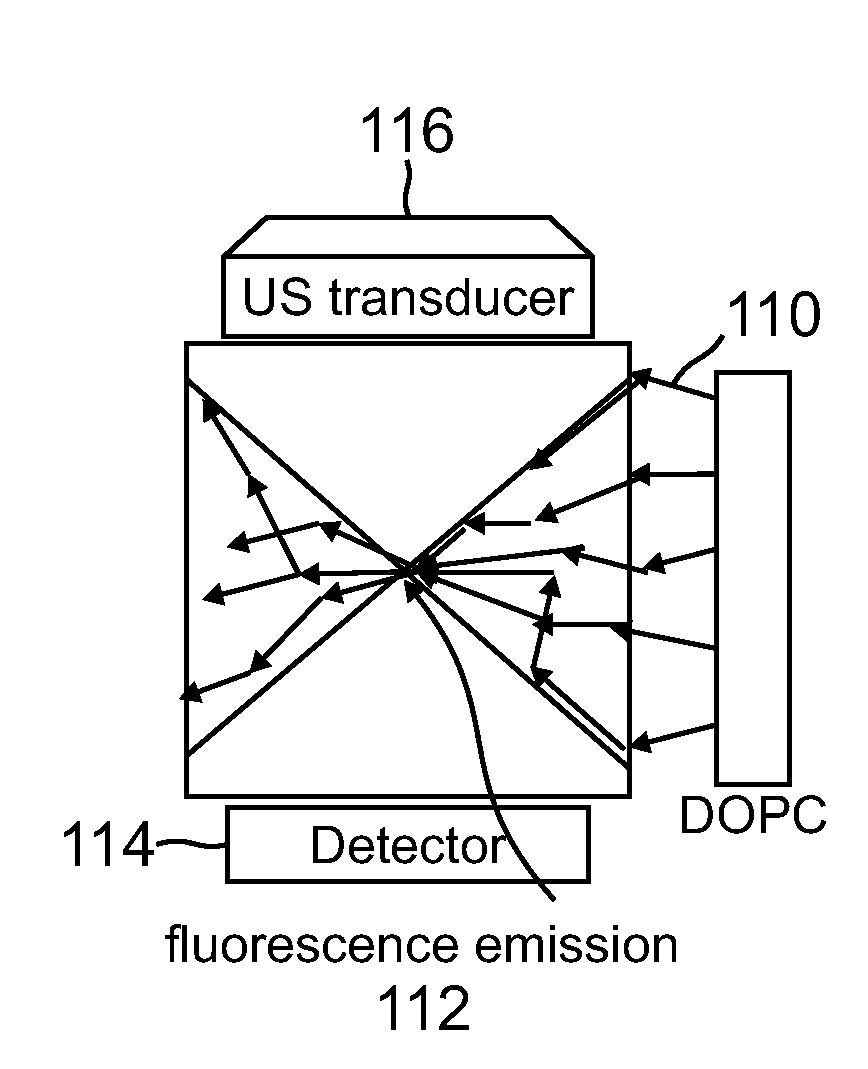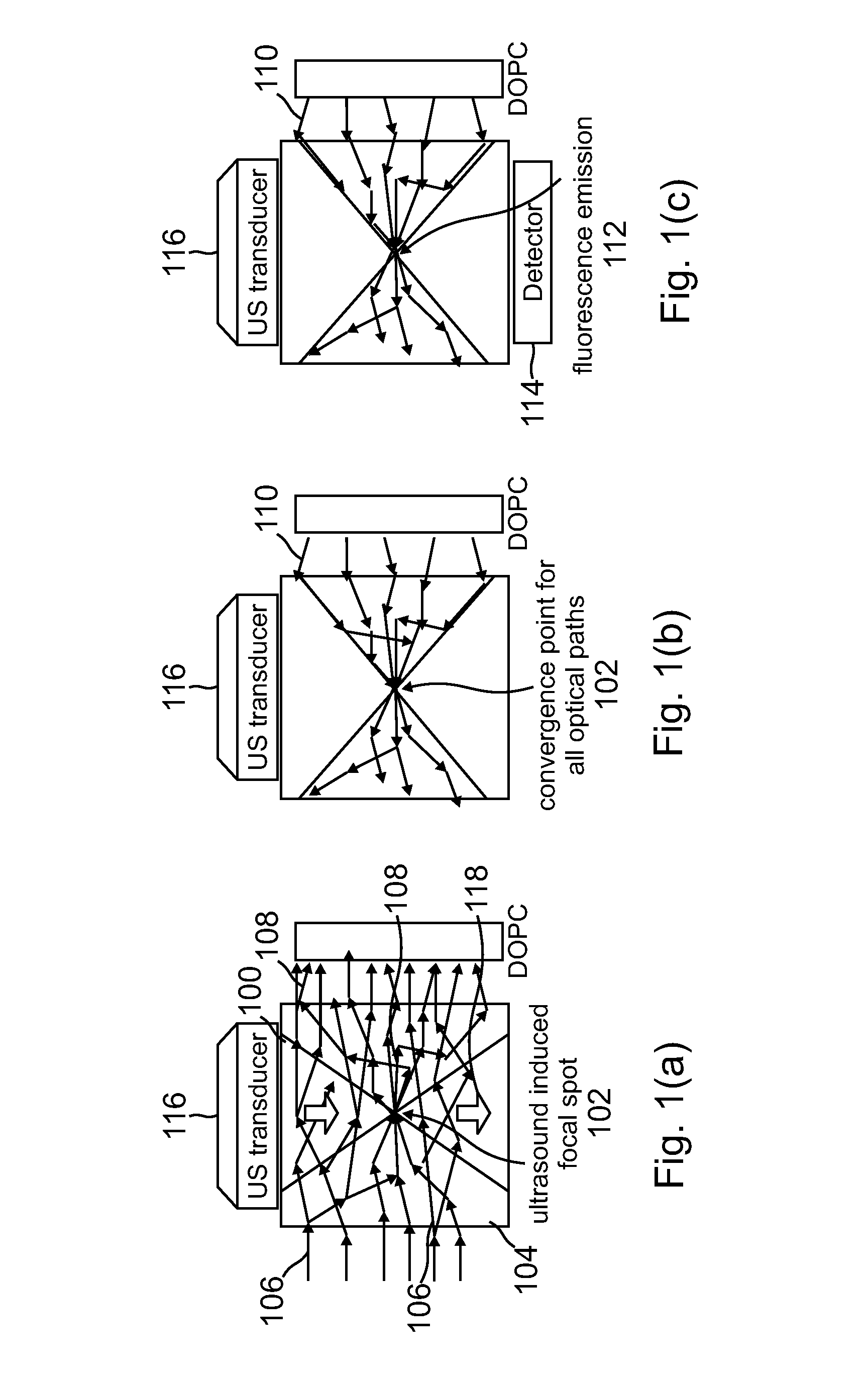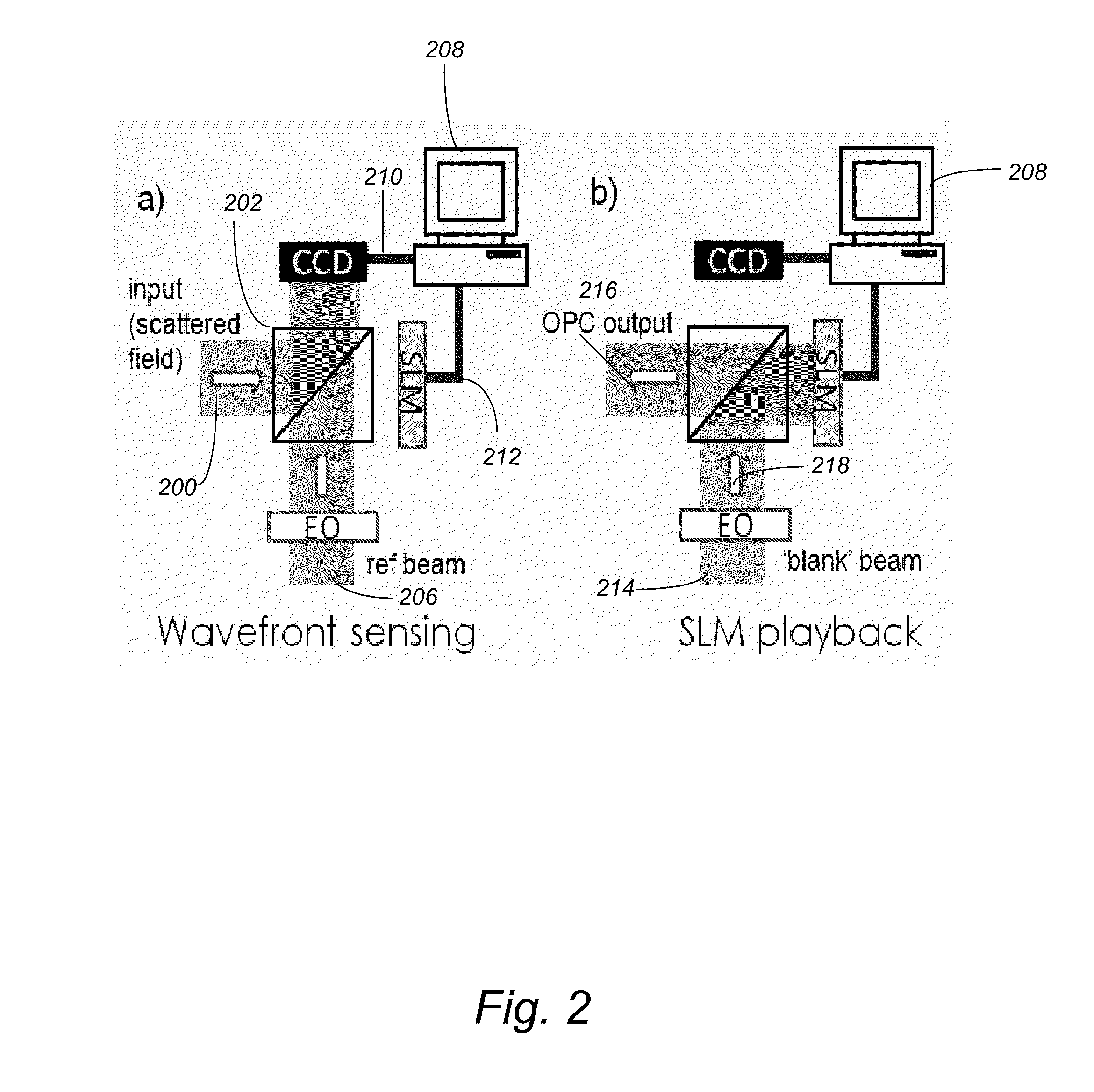Acoustic assisted phase conjugate optical tomography
a phase conjugate and optical tomography technology, applied in the direction of optical radiation measurement, spectral modifiers, radiation measurement, etc., can solve the problems of limited real-time information obtainable in vertebrate animal models by current methods, limited real-time amount, and general limited ability to perform biochemical imaging. to achieve the effect of optimizing the efficiency of modulation or frequency shifting
- Summary
- Abstract
- Description
- Claims
- Application Information
AI Technical Summary
Benefits of technology
Problems solved by technology
Method used
Image
Examples
Embodiment Construction
[0067]In the following description of the preferred embodiment, reference is made to the accompanying drawings which form a part hereof, and in which is shown by way of illustration a specific embodiment in which the invention may be practiced. It is to be understood that other embodiments may be utilized and structural changes may be made without departing from the scope of the present invention.
[0068]Overview
[0069]Despite the rapid progress in biomedical optics in the past few decades, high tissue turbidity in the optical domain remains a difficult challenge that impedes high-resolution deep optical tissue imaging. Due to elastic scattering, conventional fluorescence imaging methods are severely limited in imaging depth (typically hundreds of microns at most). Fundamentally, the problem lies in the fact that it is not possible to focus light tightly in deep tissues using conventional optics.
[0070]Focusing light in a scattering medium is not an impossible proposition. Simplisticall...
PUM
| Property | Measurement | Unit |
|---|---|---|
| mean absorption length | aaaaa | aaaaa |
| mean absorption length | aaaaa | aaaaa |
| mean absorption length | aaaaa | aaaaa |
Abstract
Description
Claims
Application Information
 Login to View More
Login to View More - R&D
- Intellectual Property
- Life Sciences
- Materials
- Tech Scout
- Unparalleled Data Quality
- Higher Quality Content
- 60% Fewer Hallucinations
Browse by: Latest US Patents, China's latest patents, Technical Efficacy Thesaurus, Application Domain, Technology Topic, Popular Technical Reports.
© 2025 PatSnap. All rights reserved.Legal|Privacy policy|Modern Slavery Act Transparency Statement|Sitemap|About US| Contact US: help@patsnap.com



